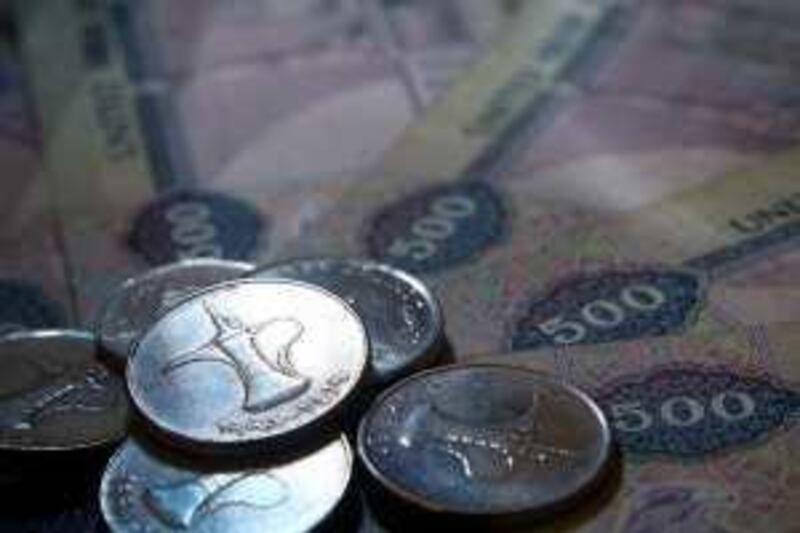Interbank borrowing costs are unlikely to fall to a level more reflective of market lending rates until liquidity improves and economic confidence returns, say analysts. The Emirates interbank offered rate (Eibor), the interest rate banks charge when they lend to one another, has steadily risen over recent months to reach its highest level since last October.
The measure is commonly used as the basis for interest on loans, including variable-rate mortgages. Despite the rise, some banks have been complaining that Eibor is still not in line with their cost of borrowing money. They say true market rates remain higher because of a shortage of liquidity in the financial system. "Eibor will not generally reflect market rates until liquidity get backs to normal," said Janany Vamadeva, a banking analyst at HC Securities in Dubai.
"With some banks still chasing deposits it will be hard for them to pass a reduction in Eibor through to customers in lower lending rates as deposits are a major component of banks' funding source." For customers, the cost of borrowing remains high as banks look to maximise profits and build up enough capital to protect themselves against non-performing loans. The price of borrowing has crept up during the global financial crisis as banks passed on the extra costs of funding to their customers.
Managing Eibor to try to keep it at a level that better reflects market rates has remained a conundrum for the Central Bank. In September, the bank overhauled the panel of providers responsible for Eibor and changed the mechanism used to calculate it, in an attempt to reduce the rate and boost lending. In the latest effort, Saif al Shamsi, the senior executive director at the Central Bank's treasury department, told Reuters last week the regulator would consult with commercial banks on how to set Eibor.
"Even if further measures are introduced to bring Eibor down it is unlikely to lead to a pick-up in credit growth, especially in Dubai where banks remain worried about loan quality," said Monica Malik, the chief economist at EFG-Hermes in Dubai. A return of confidence from lenders was crucial to see a pick-up in credit growth, she said. Concern about risk exposure to Dubai World's debt restructuring was one of the reasons some banks were reluctant to lend for an extended period, pushing up interbank rates, said a treasurer at one UAE bank.
The conglomerate is in discussions with banks about how to restructure about US$26 billion (Dh95.49bn) in debt. UAE banks have exposure of about Dh55bn to Dubai World, Moody's Investors Service, said in a report on Monday. "It's prohibitive to raise money after Dubai World," said the treasurer at the bank, who asked to remain anonymous. "The UAE needs to flood the financial system with money as the interbank rate could get higher."
Last November, the Central Bank set up an emergency liquidity facility that commercial banks could use if needed. As yet, no bank is believed to have accessed the funding. The benchmark UAE three-month rate was fixed at 2.2 per cent yesterday, compared with 1.9 per cent last month. tarnold@thenational.ae





